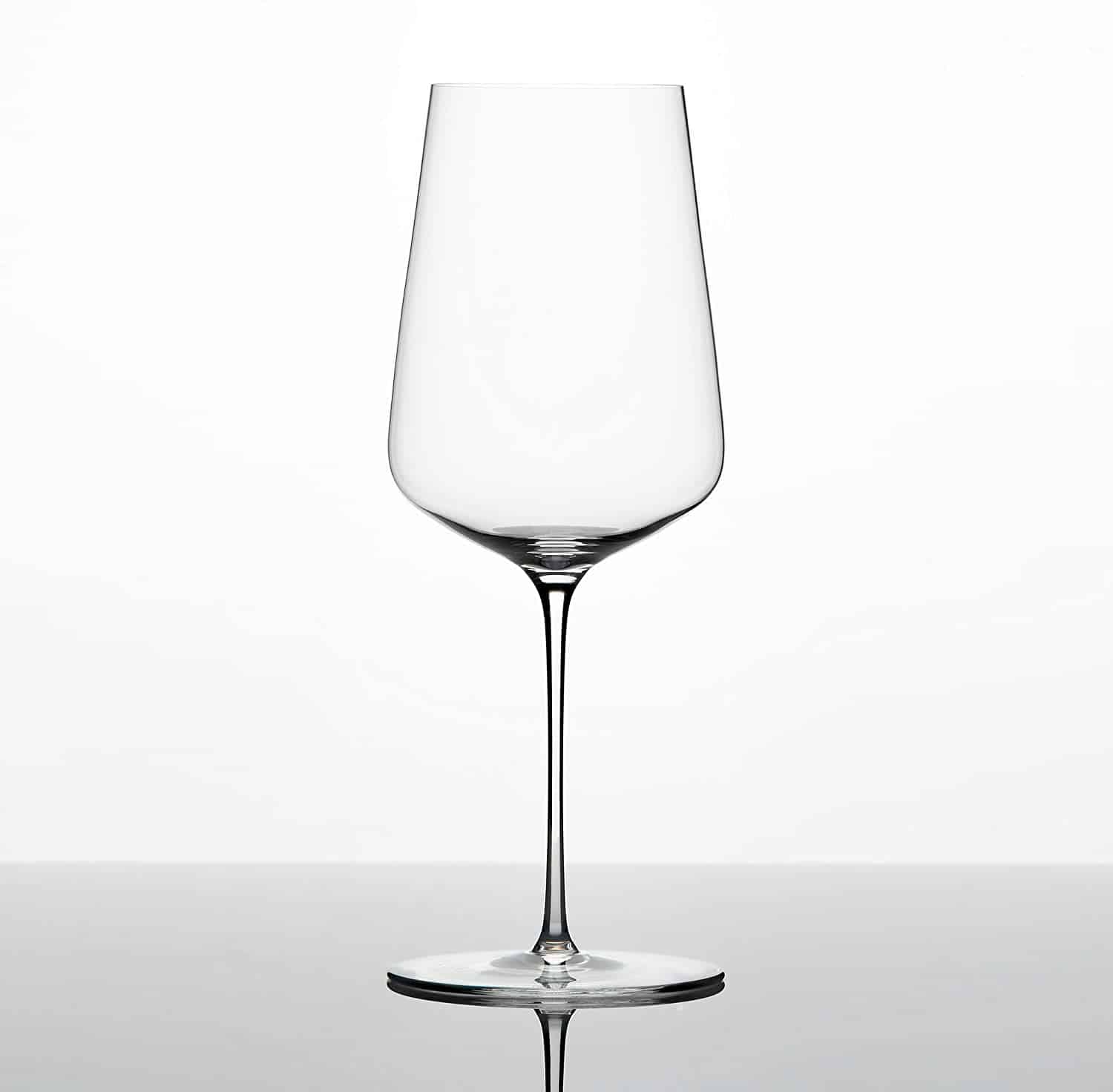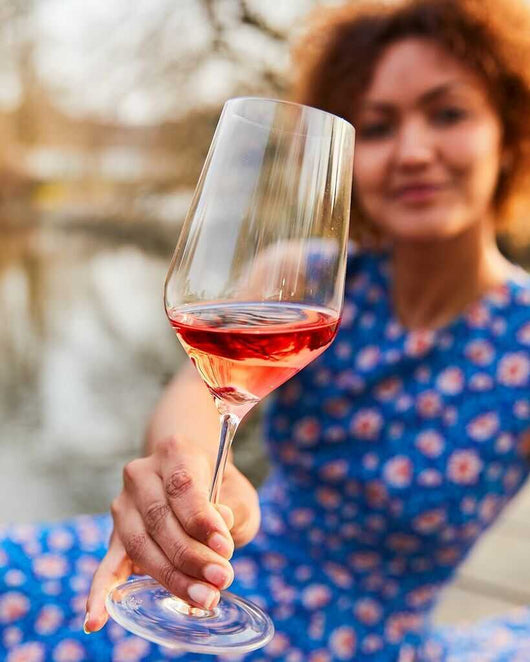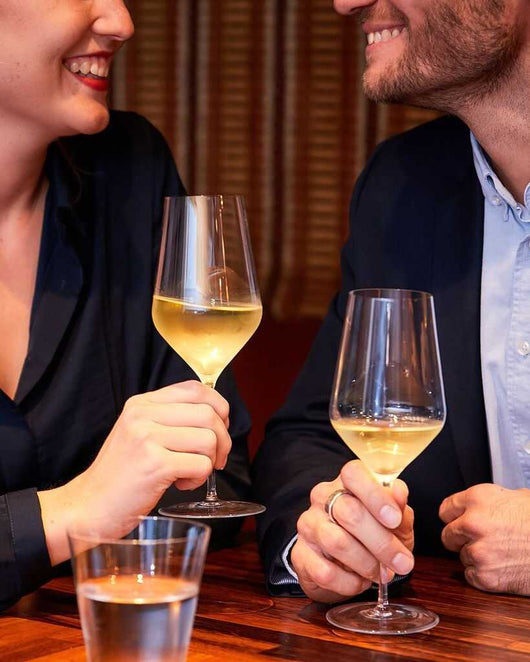

The Zalto Universal wine glass has been designed to contain the characteristics of all Zalto models. The Zalto Borgogna glass is suitable for aged red wines such as Barolo and Barbaresco, for Californian Chardonnays and Cabernets, for Amarone and Tempranillo. In this way the fruity and sweet sensations are enhanced.

Its maximum width allows to increase the surface exposed to oxygenation. The Zalto Burgundy wine glass has an elegance and a refined and pompous design dedicated to important wines. Brunello, Sangiovese, Cabernet and Shiraz enhance their elegance to the fullest. The Zalto Bordeaux glass, in addition to being the perfect glass for tasting Bordeaux wine, lends itself well to tasting important red wines. The glass allows to clearly grasp the density, the extract, the tannins and the gustatory nuances of important wines. Its breadth allows to better grasp the predominant characteristics of these wines. The Zalto Bordeaux wine glass is particularly suitable for tasting refined and medium-bodied red wines. This is how the Zalto Borgogna, Zalto Bordeaux and Zalto Universale models were born. The Zalto glass collection is made up of exclusive models designed for the different types of wine and their respective needs. Therefore, it is appropriate to say that each wine has its own glass. In the oenological field, this statement has absolutely no basis as professionals and enthusiasts know well that each wine is different from the other. Very often it is mistakenly believed that one glass is as good as another.

The production of such special wine glasses allows you to maximize the tasting experience, which is enriched and improved. The wine glasses are highly resistant to shocks and frequent washing, thus optimizing professional use Zalto wine glasses is a collection of subtle and refined unique pieces that elegantly embellish the table Zalto wine glasses are made according to the world standards of glassmaking The material used is lead-free crystal and each glass is mouth blown Let's briefly get to know these innovative wine glasses better: Zalto wine glasses have a high potential thanks to the intrinsic and extrinsic characteristics associated with them. They are well acquainted with the art of tasting and what are the elements to focus on in order to get to know the wine in the glass. The material used for their realization is the result of careful studies conducted with the collaboration of wine professionals. The right angle, in fact, allows you to capture the best of red, white and sparkling wines.

The collection of Zalto wine glasses includes elements that satisfy the tasting of any type of wine. Already Greeks and Romans had discovered that some foods are preserved better if stored in artifacts characterized by a particular angle. The reason is to allow the wine to express its full potential. Zalto wine glasses are characterized by a special inclination of 24 °, 48 ° and 72 ° that follows that of the earth. Everyone knows that wine glasses have a more or less accentuated concave bottom to allow the wine to let the aromas hover that will convey towards the nose through the mouth. Zalto-Denk'art wine glasses feature a particular design for tasting rather than aesthetic reasons. Zalto glasses: how to interpret the harmony of wine Let's get to know this model of wine glasses much in demand in the oenological field. In particular, the Zalto wine glasses have been designed to maximize the tasting experience. We offer the best wine glasses on the market. However, in order for the experience to be fully lived it is necessary to use the right tools capable of enhancing the qualities of the wine or, on the contrary, highlighting any defects. In fact, wine is a natural product, the result of a natural alchemy that takes place every time the must becomes wine. Sip after sip, the taster or the diner will live a unique experience that cannot be reproduced in any way. It allows to highlight all the organoleptic characteristics of the liquid present in the wine glass. Tasting can be considered as a key to interpreting wine.


 0 kommentar(er)
0 kommentar(er)
